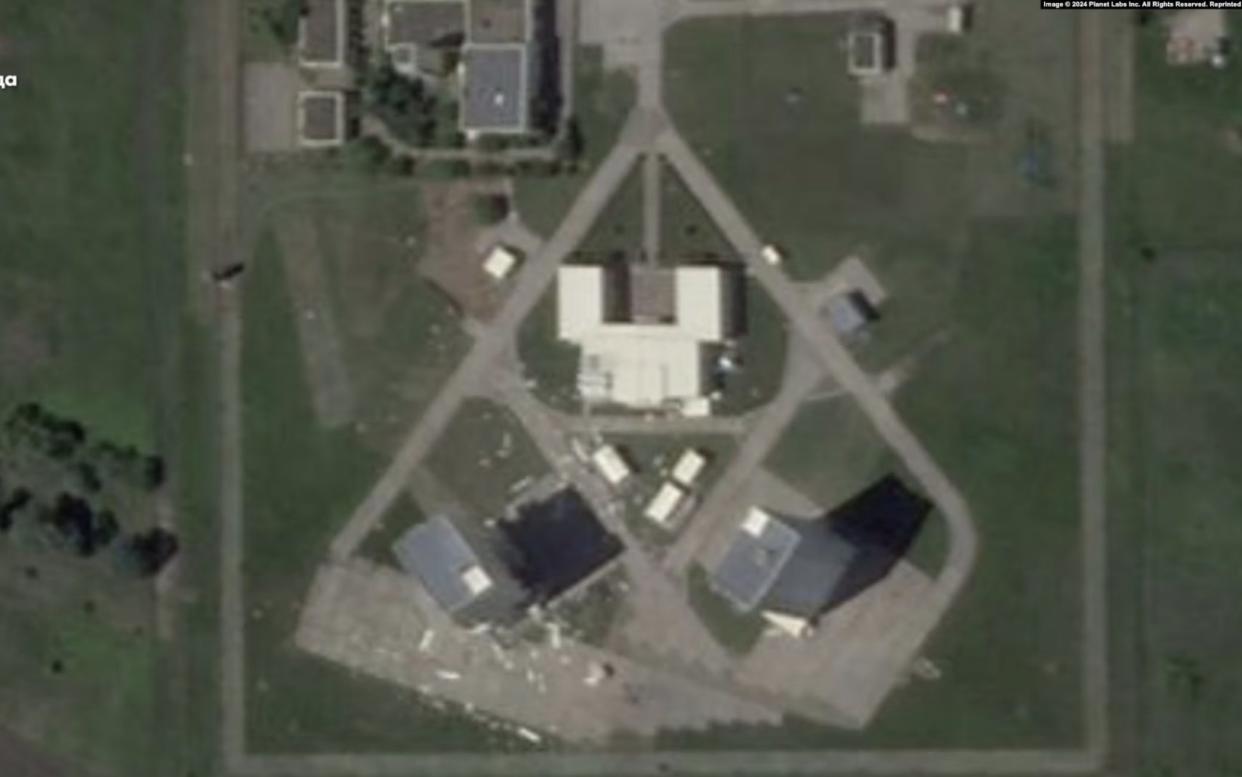Ukrainian strike on Russian nuclear radar system causes alarm in West

A Ukrainian drone strike on a Russian radar station that can track nuclear missiles has sparked alarm in the West.
Kyiv hit the Armavir radar station in the Krasnodar border region on May 23, damaging the state-of-the-art facility, which provides conventional air defence as well as forming part of Moscow’s nuclear warning system.
Ukrainian officials confirmed on Saturday that their forces had carried out the strike, saying the facility monitors airspace over the country and occupied Crimea.
The radar station has reportedly been able to track long-range Atacms missiles, delivered by the US to Ukraine earlier this year.
Mauro Gilli, a senior researcher at the Centre for Security Studies at ETH Zurich, said the drone strike had been a tactical success because it will force Russia to redeploy air defence systems and it also put down a marker that no Russian military site was untouchable.
“We can debate the effectiveness and merit but strategically there is logic,” he said.
Other Western analysts, though, were more hesitant and said that Ukraine should avoid striking Russia’s nuclear infrastructure.
“Not a wise decision on the part of Ukraine,” said Hans Kristensen, a nuclear arsenal expert at the Federation of American Scientists. “Bombers and military sites in general are different because they’re used to attack Ukraine.”
Thord Are Iversen, a Norwegian military analyst, said striking a part of Russia’s nuclear warning system was “not a particularly good idea… especially in times of tension.”
“It’s in everyone’s best interest that Russia’s ballistic missile warning system works well,” he said.
The Kremlin views its nuclear military facilities as prestige projects and striking them is considered particularly provocative.
One of Russia’s most modern radar systems, the Kremlin has deployed 10 Voronezh class installations along the Russian border. Each has a range of around 4,000 miles and can track 500 objects simultaneously.
Russia has yet to comment on the alleged attack, but it fits a pattern of intensified Ukrainian drone strikes this year on targets deep inside Russia, including oil refineries and transport hubs.
The strike came shortly after Moscow began tactical nuclear missile exercises in its Southern Military District.
Olaf Scholz has pointedly refused to deliver Germany’s long-range Taurus missiles to Ukraine, saying he fears potential nuclear escalation.
The US has so far not relented to Ukrainian requests that it be allowed to use Western weapons in cross-border strikes.
Frustrated Ukrainian military commanders said they had to watch as Russia built up forces across the border in a de facto harbour area that they were not allowed to strike.
Since then, Russian forces have captured several villages and pounded Kharkiv with missiles fired from launch sites and warplanes inside Russia.
Britain has already given permission to Ukraine to use its missiles to strike Russia and now pressure is building on the White House to follow.
Antony Blinken, the US Secretary of State, is reportedly in favour of the change and this weekend Jens Stoltenberg, the Nato Secretary General, told the Economist that it was time to “lift some of the restrictions”.
Ukraine and its Nato allies still need to be cautious, said Fabian Hoffmann, a missile technology doctoral research fellow at the University of Oslo, because some US officials and some of Ukraine’s European allies will view the radar strike as reckless.
“I have some concerns about how politically wise this decision was, as it may have negative repercussions for Ukraine down the road in terms of targeting restrictions,” he said.

 Yahoo News
Yahoo News 
